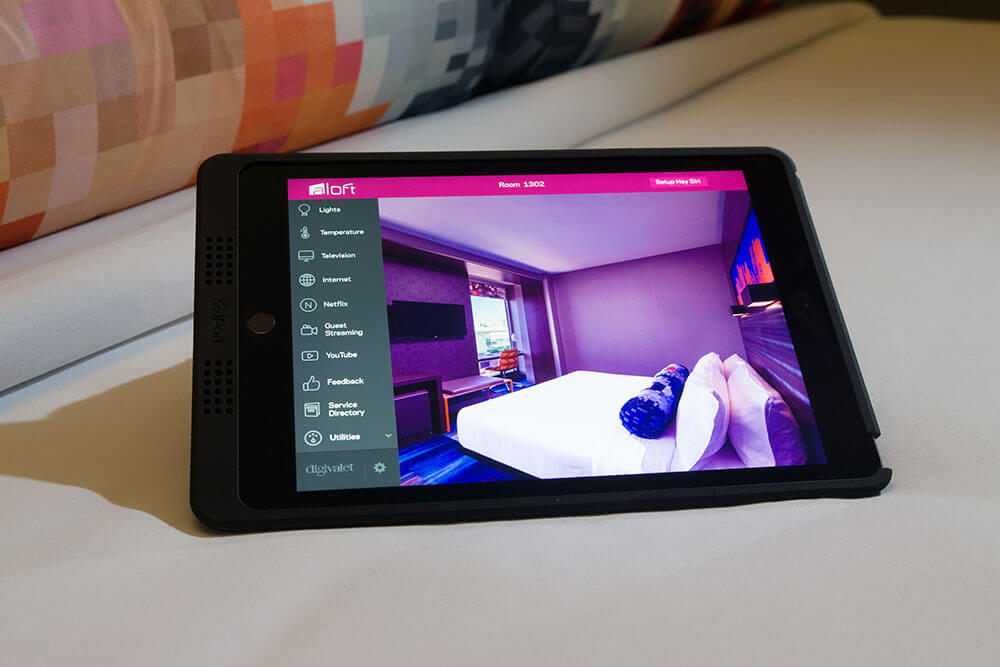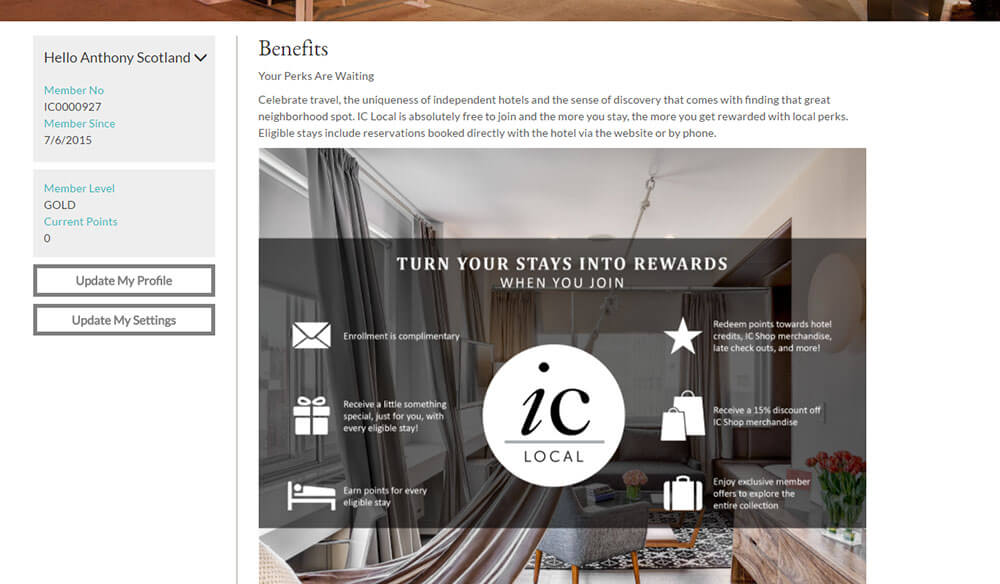If, after a guest checks into his or her room at the Aloft Boston Seaport Hotel, something isn’t quite right—the heat needs to be cranked up or a light dimmed—there’s no need to call the front desk or even move. The world’s first voice-activated hotel room takes voice commands. Powered through an in-room iPad, Project Jetson employs a custom app and HomeKit-enabled accessories.
On a smaller scale, Virgin Hotels Chicago’s customized app gives guests total control of their accommodations. Called Lucy—and with a moniker of “your personal comfort assistant”—it can order roomservice, act as a concierge for goings-on in the neighborhood and adjust the room’s temperature.
Incorporating technology often comes with an accusation that human contact is being replaced. Not so, said Flo Lugli, founder and principal of Navesink Advisory Group, a travel-industry consulting group in Fountain Hills, Ariz. “There are areas where technology can replace a personal connection and the end result is very positive,” Lugli said. “It can totally be the guest’s choice if he uses the technology or not.” One example, she said, is paying a dinner bill via an iPad already at the table: “When a personal interaction doesn’t add any value to a guest, then technology can actually provide a better experience.”
It’s that kind of innovation that Marriott International rolled out at AC Hotels recently: a buzzer-like device called kallpod technology in food-and-beverage areas. GM Dennis Clark knew right away it would be a hit as he prepared to open AC Hotel Madison in Madison, Wis., in May. “If [guests] want something, all they have to do is push a button,” he said. This has led to faster table-turns and higher revenue. It also saves wait staff a trip to inquire about whether or not to bring the check.
Clark didn’t anticipate that the technology would coax conversation between guests and wait staff. “It’s a talking point. It actually opens up the door for more dialogue,” he said. “Anything that you can do to engage the guest, the better it is.”

Another example of human interaction not as vital to the guest’s experience is in the booking process. In May, The Venetian Las Vegas began taking bookings over Facebook Messenger, one of the first hotels to do so. This gives future guests the ability to book a stay from their smartphones or tablets, which is especially valuable for on-the-go business travelers.
Riffing off of social-media innovation shows guests that a hotel is up on trends. Launched this year, complimentary usage of Snapchat Spectacles for guests at Acme Hotel in Chicago and Hotel El Paseo in Miami Beach, Fla., helps attract a younger audience. A quick press of the button and video content is directly loaded into the user’s Snapchat account.
Fueling Engagement
But first, hotels have to grab the attention of potential guests—often through technology. While videos and photos used to draw customers in, virtual-reality marketing, or guided 3D video, is now king. In May of 2016, Best Western Hotels & Resorts launched virtual-reality tours for each of its 2,100 hotels in the United States and Canada, in perfect pitch with “a [$2 billion] brand refresh,” said Dorothy Dowling, the brand’s senior VP and chief marketing officer. Best Western worked with Google Street View to create the product, consisting of 1.7 million photos. Tours can be accessed through Best Western’s YouTube channel.
Like Clark, Dowling thinks technology should further engage the customer. “To be able to bring fun to people in the form of experience is critically important today,” she said. “It allows the customer to drive the bus, so to speak. They get to move through the experience.” Adding “a level of transparency and clarity between offerings” at each property through virtual reality became “a part of our marketing mix to be able to tell our story,” Dowling said.
Renaissance New York Midtown Hotel worked with YouVisit.com to launch virtual-reality tours in April. It works best when linked with a narrative, which, for Renaissance New York Midtown Hotel, is “forward-thinking, technology-friendly,” said Gordon Meyer, YouVisit.com’s head of marketing. “There’s an immediate sense of trust when any view can click into a 3D environment.” Average viewing time is 10.4 minutes, said Meyer, and hotels enjoy a 12.3-percent conversion rate. “The average time spent on a website is two minutes. Not only are they entertained [with virtual reality], they’re very deeply engaged,” he said.

That engagement continues upon arrival with the check-in process. What often annoys repeat guests are questions that, if previous visits were logged, would not have to be asked. “It would be much better if I were to be greeted with ‘Welcome back, Ms. Lugli, we appreciate you choosing to stay with us again. As you’ve requested, we’ve reserved your king room, away from the elevator’ or something to that effect,” Lugli said.
Putting it Together
Getting rid of this annoyance was a goal of Independent Collection—12 boutique hotels in cities like New York City and Key West, Fla., each with a vastly different identity—when it hired Cendyn to merge four platforms into one. Email marketing, loyalty program, upgrade requests and guest requests all in the same space allows these hotels to better compete with big brands. The new system was introduced in January. Emails can even be tweaked to mention family-travel deals if noted in a customer profile that he or she has stayed with children previously.
“In Q1 of this year, our e-mail marketing revenues were 688 percent over Q1 of last year,” said Anthony Scotland, Independent Collection’s senior manager of loyalty and brand marketing, who attributes the spike to more targeted email marketing. “Because we are a small team, we need a platform that can support us well. It’s given us more of an ability to understand a guest’s journey.” Personalization of emails has led to less spam, too. “If we can stay out of your spam folder, then we have a fighting chance,” said Patrick Vacca, the collection’s senior operations analyst.
For hotels with a niche—such as artistic-minded clientele—digital technology allows for that same level of customization. Two California hotels—The Empress Hotel in La Jolla, Calif., and Stanford Court in San Francisco—have worked with Daylighted, a fine-art consultancy company in San Francisco, to create digital galleries that rotate with art. Guests at Stanford Court can view three 55-inch digital screens showcasing work by Bay Area artists. Digital tablets are loaded with further information about the art and artists’ bios. And, as the perfect souvenir, that art can be purchased—with a few clicks on the tablet.
